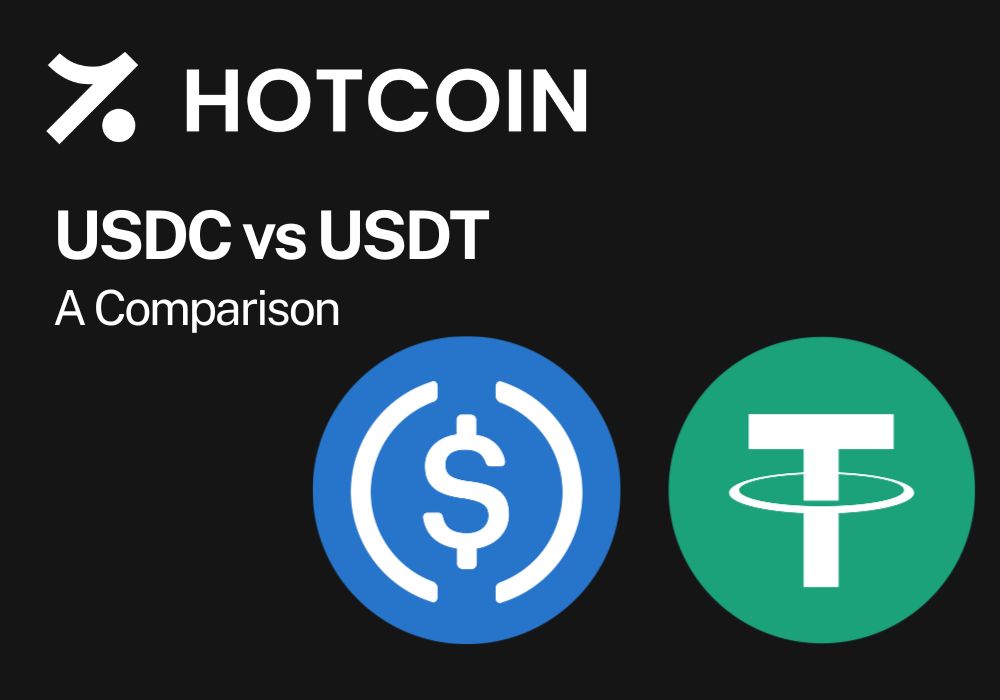
In the world of stablecoins, two names dominate: USD Coin (USDC) and Tether (USDT). Both are pegged to the U.S. dollar and widely used across trading platforms, DeFi projects and payments infrastructure, yet they differ significantly in structure, adoption, regulatory stance and risk profile. For institutions and crypto-savvy users alike, understanding their differences is essential for making informed decisions.
This article takes a deeper dive into USDC vs USDT from multiple perspectives: backing and reserves, transparency and regulation, market adoption and liquidity, and practical use cases. Let’s unpack each dimension and explore what it means for you.
USDC and USDT Backing and Reserves
At the core of any stablecoin is how it is backed, what assets support its 1-to-1 peg to the U.S. dollar.
- USDC is issued by Circle Internet Financial and its reserves consist primarily of cash and cash equivalents, short-dated U.S. Treasuries and other high-liquidity assets.
- USDT, issued by Tether Limited, uses a broader mix of reserve assets including cash, cash equivalents, and in some cases loans or third-party debt instruments.
In short: USDC’s backing is designed to be narrower and more conservative; USDT trades off somewhat broader asset backing in exchange for scale and liquidity.
Transparency, Auditing & Regulatory Profile
When it comes to issuer credibility and regulatory alignment, USDC and USDT diverge.
- USDC provides regular attestation reports from independent accounting firms and has made transparency a cornerstone of its positioning.
- USDT has faced scrutiny over the years regarding its reserve disclosures and the precise nature of its backing. Its audit and attestation history has been more controversial.
From a regulatory perspective: USDC is increasingly positioned as the “compliance-friendly” stablecoin, appealing to institutions and regulated entities. By contrast, USDT remains dominant in many retail and trading contexts but carries slightly higher counter-party and issuer risk (or at least higher perceived risk) due to historical transparency questions.
Market Adoption & Liquidity
Market size and liquidity are critical when selecting a stablecoin for trading, settlement or treasury use.
- USDT is the largest stablecoin by market capitalization and is widely available across nearly all major exchanges and blockchains.
- USDC, while second in size, is catching up in terms of institutional acceptance and regulatory alignment. That said, in some niche trading pairs or less-liquid markets, USDC may face higher slippage or fewer options compared with USDT.
In essence: if your priority is maximum liquidity and exchange coverage, USDT currently holds an edge. If your priority is transparency, regulatory alignment and institutional use-case, USDC may be the stronger choice.
Use Cases & Strategic Fit
Different use-cases benefit from different stablecoin attributes — so the choice should reflect what matters most in your strategy.
- Trading and quickly changing positions: Here, USDT tends to dominate due to its ubiquity, multiple blockchain support and deep liquidity.
- Institutional treasury, compliance-sensitive flows or regulated entities: USDC shines because of its more structured reserve backing, auditability and perceived lower issuer risk.
- Payments, global remittances and cross-border settlement: Both coins are used, but USDT may offer broader blockchain reach, whereas USDC may offer easier alignment with regulated financial flows.
- DeFi protocols, tokenised assets and settlement rails: USDC often appeals for projects seeking regulatory clarity; USDT remains vital where immediate liquidity and chain-agnostic availability matter.
No stablecoin is entirely risk-free, and understanding the nuances is crucial.
- Peg risk: Both claim to maintain a 1:1 peg, but sudden market stress or reserve uncertainty can challenge that peg.
- Counter-party and issuer risk: USDT’s broader backing and less frequent attestation might increase perceived issuer risk. USDC’s alignment with regulated entities reduces this risk but doesn’t eliminate it.
- Regulatory risk: Both coins operate under increasing regulatory scrutiny; future rules in the U.S., EU or elsewhere could impact reserve requirements or issuance practices.
- Liquidity and redemption risk: In extreme conditions, redemption capacity or liquidity could differ between the two coins — for example, USDC’s smaller market cap may lead to higher slippage in niche markets.
- Strategic fit risk: Using a stablecoin that doesn’t align with your strategic objective (liquidity vs compliance) can lead to inefficiencies or unintended exposures.
An academic study of stablecoins highlighted that greater transparency does not always equate to lower run-risk during stress. In some cases, transparency can accelerate market reactions.
Strategic Takeaways for Users & Platforms
For crypto traders, institutional users, payment providers and platforms like Hotcoin, the USDC vs USDT choice boils down to aligning coin attributes with use-case priorities.
- If your platform prioritises mass liquidity, broad chain support and trading-centric flows, you’ll likely favour USDT.
- If your platform prioritises regulatory alignment, institutional credibility, transparency and compliance, USDC might be the better strategic asset.
- Hybrid strategies make sense: many platforms support both USDT and USDC — allowing flexibility across trading, settlement and treasury use-cases.
- For risk-aware users: monitor reserve attestations, issuer disclosures and regulatory developments — choosing a stablecoin shouldn’t be done purely on peg status but on issuer integrity and ecosystem fit.
USDC and USDT remain the two titans of the stablecoin world. While they share the same fundamental mission: pegging to the U.S. dollar to provide stability in a volatile crypto landscape. Their design philosophies, transparency standards and ecosystem roles diverge meaningfully.
In a rapidly evolving regulatory and macro environment, choosing the right stablecoin is more than a convenience, it becomes a strategic decision. Whether you are trading, settling payments, managing treasury, or launching tokenised assets, understanding the trade-offs between USDC and USDT positions you to make smarter decisions.
Your Trades. Our Priority. Hotcoin.
Hotcoin Official Site: https://www.hotcoin.com
Hotcoin Twitter: https://x.com/HotcoinGlobal
Hotcoin Telegram: https://t.me/HotcoinEX
Hotcoin Chinese Twitter: https://x.com/hotcoinzh
Hotcoin Chinese Community: https://t.me/hotcoinglobalcn
Hotcoin YouTube: https://www.youtube.com/@hotcoinglobal
